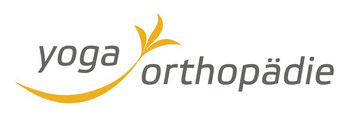DR. GÜNTER NIESSEN
Shoulder workshop, headstand stool and more
The headstand stool - an overview
Again and again I receive exciting questions from yoga teachers of the different yoga styles. Who should, may and can use the headstand stool and why? It seems that despite the establishment of this aid in the scene, there is still uncertainty when it comes to the therapeutic context. If you have no problems with the headstand, you can use the headstand stool without hesitation, that much is clear. But is it safer or gentler and if so, for whom and which part of the body?
For many practitioners, especially as they get older and if they have not practised appropriately before, the headstand on the mat becomes a problem. Far too many have caused themselves acute or permanent damage trying to do it. The problems in this regard are well known. The headstand stool takes the pressure off the cranial calvaria and cervical spine and shifts it to the shoulder-neck region, especially the muscles with pressure going beyond this to the shoulder blades. However, the following problems can also mean that practitioners should better refrain from using such a stool:
- Gefäße: Durch die Umkehrhaltung des Kopfstandes kommt es mit der Schwerkraft zu einem hohen Rückfluss des Blutes aus dem Rumpf und unteren Extremitäten zum Herzen und zum Kopf. Die arterielle Durchblutung des Kopfes muss möglichst schnell gedrosselt werden, da es im begrenzten Raum des Schädels sonst zur Kompression des Gehirns kommen würde. Nicht vergessen sollten wir den Platzbedarf im Kopf durch den venösen Rückstrom der nicht über Klappen verfügenden Halsvenen. Auf dieser Ebene ist der Kopfstand also ebenso anspruchsvoll wie ohne Hocker. Wir müssen bei den Übenden ein reagibles Gefäßsystem annehmen dürfen – dass braucht mit zunehmendem Alter eine gute Ernährung und regelmäßiges Training.
- Heart: The return flow of blood to the heart is greatest and fastest in headstand of all the inversion postures. In this respect, too, there is no significant difference to the classical headstand. We must therefore assume that the practitioner has a strong heart with a regular rhythm. Since less strength is needed on the headstand stool, some practitioners stay longer in the inversion, which requires more endurance from the heart. If the heart and vascular system are not well trained, it can easily lead to clot formation and embolisms or to the heart being overtaxed (acute heart failure).
- Obesity: fatty tissue is perfused. Because many yoga teachers focus on relieving the cervical spine in the headstand stool, they believe that people who are overweight can also practise headstand in the stool (because the cervical spine is relieved). The latter is true, but fatty tissue is supplied with blood and being overweight is often associated with a reduction in the strain on the cardiovascular system with increasing age. High blood pressure with or without medication, reduction in cardiac output, diabetes with cardiac neuropathy, etc. are the frequent consequences. Since more blood flows to the heart and towards the skull in overweight people than in normal-weight people and regulation there is almost always reduced due to the sometimes more sometimes less obvious concomitant diseases, I can only advise against using the headstand stool.
- Stability: Without the necessary torso stability, the headstand remains a game of risk, even in the stool. It is not so rare for practitioners to fall over in and with the stool with sometimes serious consequences, to lose their balance even without falling over, which then only leads to strains and less serious injuries, or to experience dizziness, balance or word-finding problems immediately on coming out of the stool. This is also potentially unfavourable.
- Pressure: The pressure in the headstand stool is transmitted through the shoulder and neck muscles and the arms have to balance the posture for untrained people. Occasionally, practitioners find this pressure uncomfortable. In addition, the cervical spine cannot be completely relaxed, as mistakenly assumed; the basic tone of the muscles remains. Compared to inverted dangling from a bar (with the backs of the knees hooked in) or inverted tables, there is much more tension in the cervical muscles, so the effect on the cervical discs in the stool - as far as traction is concerned - can be practised much more effectively in a different way.
In summary: Be careful with whom you practise. There is often a person hanging from the cervical spine. It is honourable to relieve the latter, but it is not sensible to endanger the rest because of the serious possibility of damage.
